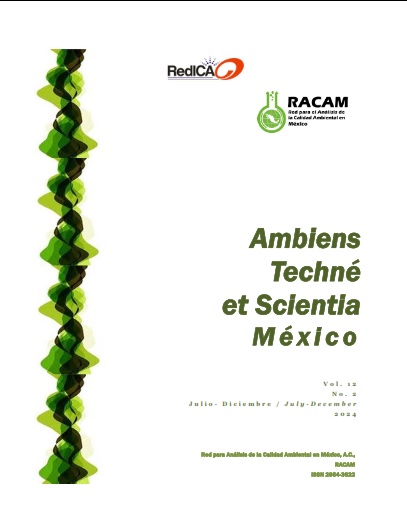Nitrogen species in an electrochemically assisted constructed wetland at laboratory scale
Keywords:
Microbial fuel cells, constructed wetlands, nitrogen transformationsAbstract
Electrochemically assisted artificial wetlands were developed for wastewater purification and electricity generation simultaneously. This is possible by taking advantage of the microbial activity in the anaerobic zone and the aerobic conditions on the surface. In the anaerobic region, bacterial communities degrade organic matter and other compounds and transfer electrons to an anode thanks to their metabolism. These electrons are transferred to the cathode (on the surface), where they react with the oxygen present and with hydrogen ions that, due to the microbial metabolism, are also transferred. The products are cleaner water and an electric current. Simultaneously, various biochemical transformations occur within the wetland. The nutrients present, such as nitrogen, are chemically transformed depending on the aerobic conditions and the presence of certain bacterial species. The present work focuses on the study of the transformation of nitrogen species and the generation of electricity in an electrochemically assisted artificial wetland on a laboratory scale. To do this, six wetlands with a working volume of 5 L were operated. In each wetland, an anode, a cathode and an external electrical circuit connected to a different electrical resistance were installed. The electrodes were made of graphite felt and stainless steel sheet. The electrical resistances used correspond to the values of 20 kΩ, 10 kΩ, 5 kΩ, 1 kΩ, 100 Ω, and a wetland was left in open circuit. The plant species used was Phragmites australis and the system operated under shaded environmental conditions. From the analysis of results it was observed that the connection of the external electrical resistance had an effect on the removal of nitrogen. The reactor with the lowest removal of total nitrogen was the reactor that was kept in open circuit, while the reactors with the highest removal were those that were connected to a resistance of 1 and 10 kΩ.
Downloads
Downloads
Published
Issue
Section
License
Copyright (c) 2024 Ambiens Techné et Scientia México

This work is licensed under a Creative Commons Attribution-NonCommercial 4.0 International License.



